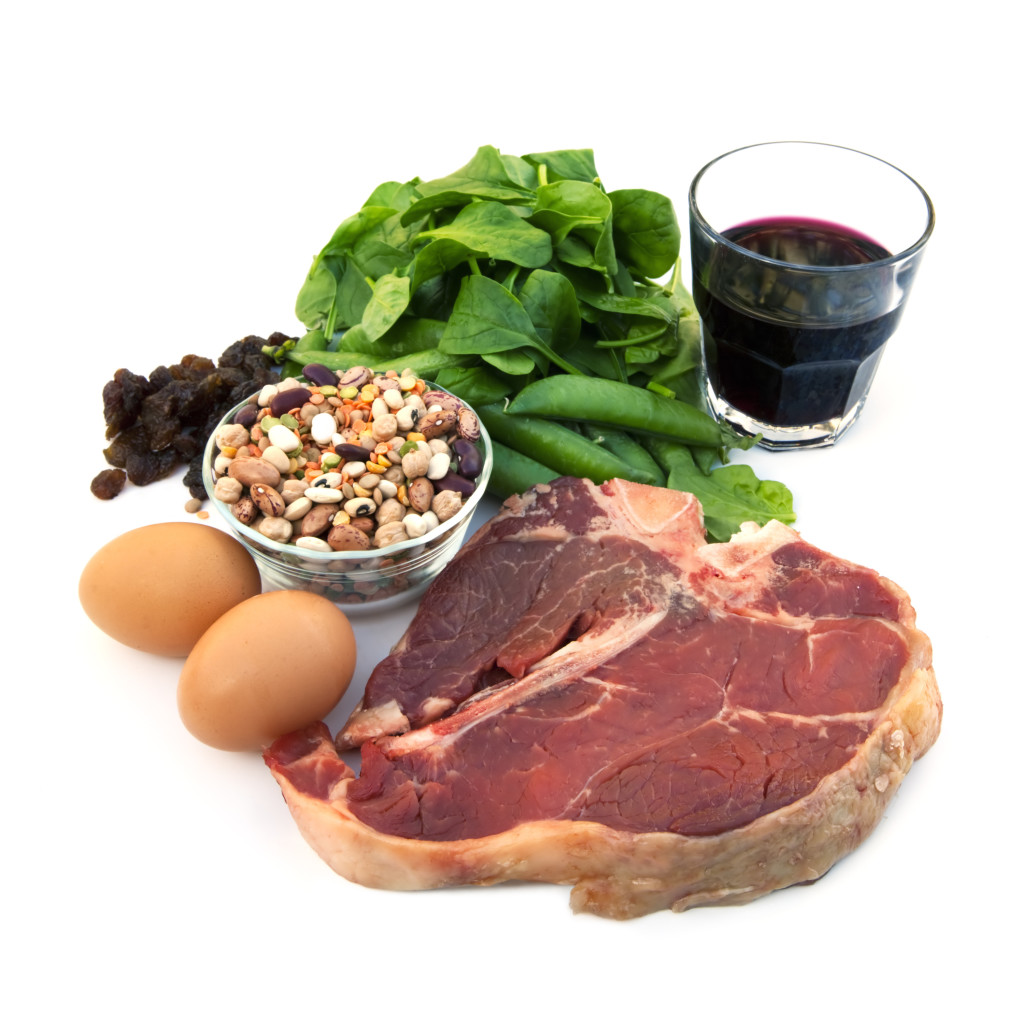What is Anemia?
- Anemia is a reduction in the number red blood cell (RBC) and the hemoglobin concentration of the blood. In other words, it is a condition in which our bodies do not produce enough healthy RBCs.
- Red blood cells are vital to our survival because they provide oxygen for our body.
- Every RBC in our bodies has iron. This iron is needed to produce hemoglobin. When there is not enough iron, hemoglobin production is decreased, which then affects the number of red blood cells thus causing anemia.
- There are various types of anemias, which varies in their causes and the way in which they are treated. They are broken down in the following 3 categories:
- Anemia due to blood loss
- RBC can be lost in bleeding. It can be acute or chronic bleeding.
- Acute blood loss can be a result of a ruptured vessel, wound or a trauma.
- Chronic bleeding can be a result of gastrointestinal tract conditions such as ulcers, hemorrhoids and cancer. It can also be from gynecological disturbances such as heavy menstruation.
- Anemia due to increased rate of RBC destruction
- Sickle cell disease.
- Anemia due to impaired RBC production
- Iron deficicency anemia
- Megaloblastic anemia
For this article, we are going to discuss iron deficiency anemia. Iron deficiency anemia(IDA) is a form of anemia in which the body does not have enough iron or when the iron stoes in the body is depleted. As mentioned earlier, iron is needed to produce hemoglobin and is crucial for oxygen transport. It is the most abundant trace element in the body. RBC brings oxygen to the body. Iron is an important part of RBC. If the RBC is lacking iron it will find it hard to transport iron. Each day we need 20-25mg of iron for RBC production.
Where is iron stored in the body?
- Liver
- Spleen
- Bone Marrow
How is iron transported?
The transport of iron in the body is mediated by 3 proteins:
Iron is transported from the duodenum of the small intestines into the mucosal cells of the stomach in the ferrous state where it is then converted into the ferric state. Here, it may combine with apoferritin to form ferritin or it may cross the plasma.
In the plasma, iron is bound to transferrin where it is then delivered to the bone marrow where it binds to transferring receptors on RBC that are developing. From here, it then releases iron in the ferrous state.
Where is iron absorbed?
Iron absorption occurs mostly in the duodenum and the upper jejunum. It is influenced and reduced by certain factors. Here is a table with the various factors that influences or reduces iron absorption.
| Factors that Increases Iron Absorption | Factors that Decreases Iron Absorption |
| Acids (Vitamin C) | Ferric form |
| Ferrous form | Excess iron |
| Pregnancy | Tea |
| Inadequate RBC production | infections |
| Lack of Oxygen | |
| Blood loss: menstruation | |
| Rapid growth |
What are the sources of iron?

- Animal products
- Liver
- Kidney
- Eggs
- Plant
- Green leafy vegetable: spinach
- Wheat
- Corn
- Beans
One should note that the best source of iron are those acquired from animal products. This is because iron from animal products are heme iron and that is what is in found in RBC.
IDA is the most common cause of anemia in the world. It is caused by the following:
1. Excessive blood loss
[unordered_list style=”tick”]
- Menstruation
- Peptic ulcer
- Parasites: hookworms
2. Increase requirements
[unordered_list style=”tick”]
- Pregnancy
- Infancy
- Adolescence
- Growth
3. Poor diet
4. Malabsorption
5. Gastrectomy
What is the the recommended intake for iron?
- About 8-15 mg/day but varies with age. The table below giveS the Recommended Dietary Allowance from infant to adult.
What are ways in which iron is lost from the body?
- Urine
- Menstruation
- Hair
- Skin
- Nails
- Shedding of intestinal cells
What groups are more prone to iron deficiency?
- Pregnant
- Menstruating females
- Adolescents
What are some signs and symptoms of IDA?
- Symptoms
- Fatigue

Source: NashikDoctors.com - Dizziness
- Lethargy
- Shortness of Breath
- Fatigue
- Signs
- Pica, this is an unusual dietary cravings
- Decline in work and school performance
- Pagophagia( craving for ice)
- Oral lesions
- Spooning nails
- Esophageal webs
- Pallor
How is IDA treated?
- Find the underlying cause and treat it.
- Treat with oral administration of ferrous sulfate.
- Blood transfusion for severe anemia.


This is AWESOME – as an RN Student – I am psyched to find this sight – I can use it as a refresher to A&P – I will be visiting this site often – once I graduate and can afford to donate – I definitely will… LOL!!! Thank you for this website – it is fabulous!
I read your article on Iron deficieny anemia. However I could not understand the following..
How does inadequate RBC production, lack of Oxygen and blood loss through menstruation lead to increased Iron absorption.
This is directly from the table above.
Please enlighten..
I look forward to your reply